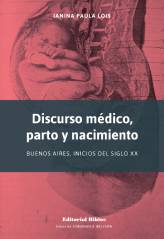August 2016
There are disagreements about the identity of the Brazilian Unified Health System – SUS – even among those who argued strongly for its creation. For some it is an innovative health system that formally guarantees access to healthcare, as well as performing the functions of health prevention and promotion. Others argue that it should form part of a process of installing a new ‘socialist’ society based on greater solidarity.
Decentralization of services involves governance, control and inspection of many actors in more than 5,000 municipalities, not an easy task. To discuss these and other issues about the Brazilian public healthcare system, we invited Professor Carlos Henrique Assunção Paiva, coordinator of the Observatório História e Saúde, Casa de Oswaldo Cruz/Fiocruz.
Dr. Paiva has published several articles and books about the history of public health in Brazil, health reform and the Brazilian National Health Service (SUS).
What is the SUS and how does it work?
The first of these two questions may seem simple but it is not because there are different expectations and perspectives about what the SUS has become. For certain social groups it merely represents the provision of medical consultations, tests, procedures and hospital beds by the government for the poorest people. For those who are the poorest in Brazil the SUS represents all the foregoing but for millions of people it also constitutes the only method to access healthcare. For economic groups linked to the health sector the SUS may represent a location where costly medical procedures can be performed; the type of procedures that the private sector does not wish to carry out because of their expensive nature.
There are disagreements about the identity of the SUS even among those who argued strongly for its creation; for some it is an innovative health system that formally guarantees access to healthcare, as well as performing the functions of health prevention and promotion, while for others it should form part of a process of installing a new ‘socialist’ society based on greater solidarity. Thus, to define the nature of the SUS, without using jargon related to state bureaucracy and academia, is no easy task. Perhaps it is a little less complicated to describe how the SUS works.
According to the Brazilian Institute of Geography and Statistics (IBGE) about 70% of Brazilians turn to the public system in order to resolve their health problems. I am not only referring to hospitals, but also the primary level of healthcare, which has been greatly expanded over the last decade. Access to care services within the SUS is provided in different ways, including through contracted private hospitals.
The SUS is decentralized, which means that municipalities are, and increasingly will be, responsible for providing services, especially those involving primary healthcare. As for its operation, without doubt, the key word is ‘universal’. This means that the SUS offers assistance unreservedly and without any direct compensation for its services.
Obviously, that is not insignificant, especially if we consider other models for healthcare, particularly in the USA, where health care is synonymous with large bills. Despite the emphasis on providing healthcare, the SUS is also involved with other services and functions such as health surveillance, mass vaccinations and other activities that are essential for the health of the Brazilian population.
What innovations has the SUS provided compared with health systems in other countries?
A health system is not something that can be developed within a cultural, political and institutional vacuum. Consequently, it is normal that proposals and ideas that are developed and applied in other contexts undergo adaptations and/or interpretations in the light of local needs and possibilities when they are implemented in another country.
It is important to say that this process of development and dialogue with other experiences does not necessarily produce improvements that are more intelligent or more viable in the local context. However, this is a process that should be conducted and perhaps we do it regardless of our will. For example, let’s take the issue of the process of the municipalization of health services. Strictly speaking, decentralization was not a new issue in terms of the Brazilian experience of organizing public health.
One of the most important outcomes of the Third National Health Conference in 1963 was the conclusion that public health management needed to be decentralized. Months later that decision was aborted due to the military coup of 1964. Decentralization was not a concept taken seriously by the Brazilian military.
Nevertheless, this approach was taken up again at the end of the dictatorship and it was strengthened by the vigorous movement of democratization, which included those in favour of decentralization. So, what’s new about this idea? From the legal perspective, the process of the decentralization of the health system in Brazil produced another federal entity alongside the states and the union, i.e. the municipality.
In practical terms, conditions were created to transfer resources, but also obligations for the mayors of those municipalities, which were transformed into entities that managed the SUS.
The most important question to bear in mind is that we are talking about more than 5000 municipalities! In other words, we are referring to a political and institutional body that involves the provision of services, but also the governance, control and monitoring of many actors, apart from the obvious difficulties that can arise, especially regarding those municipalities whose fiscal and administrative bases are fragile.
In summary, we are facing an ‘innovation’ that needs to be adjusted and improved. Despite immense difficulties I believe that we are making progress regarding these adjustments.
What has changed in relation to theory and practice? What are the main obstacles and difficulties?
If we consider what we have discussed so far, it is clear that we have many problems. Many of those problems are related to the immense distance that has developed between theory and practice.
By ‘theory’ I mean that which has been designed to operate ideally, and by ‘practice’ I am referring to what actually occurs in the daily services of providing healthcare. In other words, some things that are theoretically considered to function in a certain way can often function in a completely different way in reality.
I will mention one particular aspect that appears to me to be one of the most important issues that reflects the divergence between theory and practice. In its so-called doctrinal principles, the SUS discusses the prospect of achieving ‘comprehensive care’.
Summarizing the discussion, it entails imagining how a service user could be attended to in relation to all their needs, and not merely their biological or disease-related issues.
However, such expectations have been found to be limited by the standard of training that health workers receive and also the manner in which they carry out their work, which reveal, in practical terms, that reality is completely different from what was expected in theory. Despite efforts to change this reality it seems that fragmented practices still dominate as the standard in the performance of health work that is focused on disease.
This kind of gap between theory and practice, or between expectations and reality, is very important. It compromises and severely limits the performance and legitimacy of the SUS. To cite one example, how can professional team activities be developed in the context of the Family Health Strategy if most doctors are trained to act in isolation?
How can history contribute to the improvement of public health policies?
As I have already said, health policies, as well as other policies, are not formulated and implemented in a political, institutional, economic or cultural void. Consequently, they are simultaneously stimulated and constrained by the contexts that generate them; from which they are inseparable.
However, sometimes common sense prevails and health issues are considered to be the domain of doctors and other experts because they are aseptic and technical decisions and problems, i.e. they are removed from moral, ideological, political and economic guidelines. So much so that sometimes, even among those who formulate and implement policies, a normative perspective seems to prevail, perhaps in the expectation that it should be sufficient to make a correct diagnosis based on reality to actually know what to do and how to implement it; in other words, once health requirements are identified, mobilize the necessary resources and move into action. Unfortunately, reality has been rather more complicated than this lovely mirage.
The fact is that the success of health policies and guidelines depends, among other things, on the context in which they operate. By context, I mean, for example, the existence of a social and political base, in its broadest sense, that supports health policies or guidelines. Therefore, health policies do not rely solely on their ‘technicality’, but, to a large extent, on the conditions and the environment that restricts them.
This environment is, in turn, the result of a certain process which develops over time. In this context, time is a complex process of interaction between people and events; it is the matrix that determines collective life. Using this line of thinking, we can say that our political and economic institutions, beliefs, habits, and guidelines arise from specific and concrete historical conditions.
The same reasoning can, and should, be applied to health policies, ‘technical’ guidelines in the field, the standards of training and performance of professional work; in short, the issues that organize the health sector. After all, it is impossible to understand certain injunctions, limits and challenges that affect health policies without also considering the wider different institutional circumstances and political constraints that impact upon the overall issue of health. For example, it is impossible to discuss the challenges facing a policy like the Projeto Mais Médicos (More Doctors Program) without considering the historical, regulatory deficit of medical work on the part of the Brazilian state. The limitations of such initiatives are often located in problems of a macro and historical nature.
Read in HCS-Manguinhos:
Health reform and the creation of the Sistema Único de Saúde: notes on contexts and authors
Paiva, Carlos Henrique Assunção; Teixeira, Luiz Antonio
Political challenges facing the consolidation of the Sistema Único de Saúde: a historical approach
Rodrigues, Paulo Henrique de Almeida
Full issue about SUS (vol. 21, n.1, jan.-mar. 2014).







